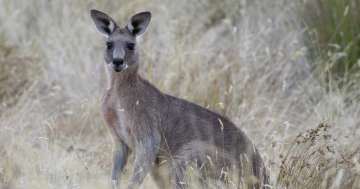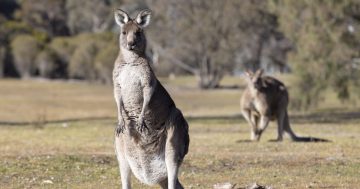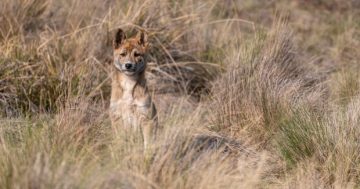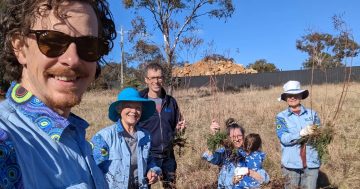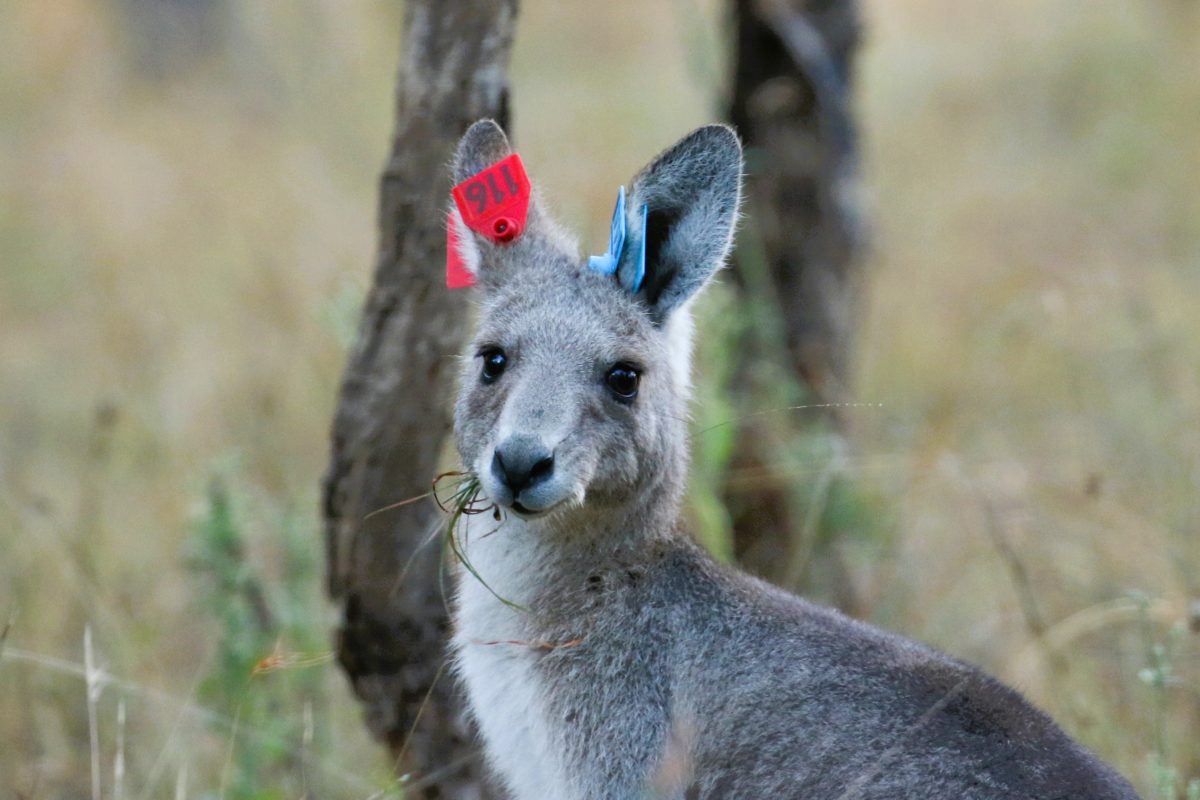
The kangaroos which have been sedated and given the contraceptive vaccine GonaCon are tagged. Photo: Caroline Sternberg, ACT Parks.
The ACT Government has more than 1000 kangaroos in its sights for this year’s cull, but it’s a smaller number than in previous years thanks to plenty of rainfall and a new nonlethal weapon.
Six reserves across the ACT will be closed over June and July to allow the annual ‘Kangaroo Management Program’.
ACT Conservator of Flora and Fauna Bren Burkevics said it’s “critical” to prevent overgrazing in the region’s grasslands and woodlands, killing off threatened species like the striped legless lizard, grassland earless dragon and golden sun moth.
“The ACT’s natural temperate grasslands … provide habitat and protection to a wide range of plants and animals that are local to Canberra, some of which are on the road to extinction if these ecosystems are overgrazed and become degraded,” he said.
The cull is an annual event, but in recent years the numbers have dropped off as good rainfall lowered the risk of overgrazing. It started with 494 in 2009 but rose to 1839 the following year and 2439 in 2011, hovering between 1154 and 1989 from 2012 to 2018. The most kangaroos culled in a year was 4035 in 2019. The numbers then dropped to 1931 in 2020, 1505 in 2021 and 1645 last year.
Between October and December last year, ecologists checked grass levels at more than 500 sites, not only for cover but also height and health, in the first step towards finding out how many kangaroos to cull for the 2023 season.
Kangaroo numbers were also assessed at 16 sites across the ACT’s nature reserves between December 2022 and February 2023.
“There are a few different methods we use in the ACT,” Macropod Ecologist Claire Wimpenny explained.
“The simplest method we use in our small, very open grassland sites is an accurate headcount using just a few people, some strategic positioning and good communication.
“At bigger sites, we do what we call a sweep count … Depending on how big the site is, between 10 and 30 people form a line across the reserve and sweep the reserve, counting the kangaroos that move through.
“Where we can’t do either of these methods, we do a walked-line ‘transect’ method. In each reserve, we have over 40 km of transects or tracks, and a single person walks these and notes the kangaroo groups they see. There’s a statistical analysis that is used to turn these observations into a density estimation.”
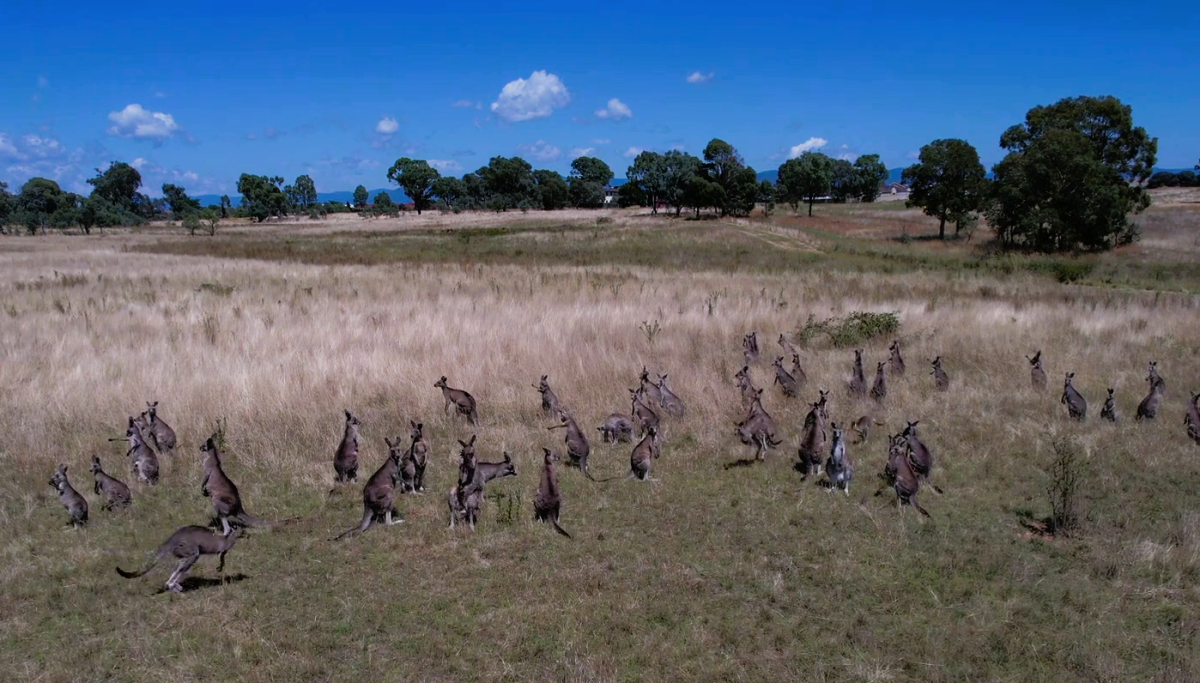
Count the kangaroos. Photo: ACT Government.
Put all the numbers in and a formula spits a culling figure out. For the 2023 season, this is 1042 kangaroos.
“If there’s a discrepancy between how many there should be and how many there are, that’s our recommendation for culling,” Claire said.
Licensed and tested professional shooters are then contracted by the government to go into the nature reserves at night and commence the cull. The bodies are then “disposed of appropriately”, some ending up as poisoned bait in other pest control programs.
But this year, the government will continue to roll out the contraceptive vaccine GonaCon. This was initially devised in the US for controlling wild deer numbers and then trialled here on a small scale by CSIRO. It joined the official government arsenal for the first time in 2022.
The vaccine is administered to female kangaroos in a small two-chambered dart (with one chamber full of marking paint), and is found to leave the kangaroos infertile for about seven years.
“In our small-scale trials, we’ve been able to show that it limits population growth,” Claire said.
“Based on these, we are now moving into a large-scale deployment of GonaCon. At Mulligan’s Flat Woodland Sanctuary and Farrer’s Ridge, we’re aiming to treat approximately 70 per cent of the adult females. This is expected to allow some breeding level to offset natural mortality.”
GonaCon won’t completely eliminate the need for culling in the future, but as a nonlethal method, it’s hoped to assuage community criticism of local kangaroo management.
Bren said the cull was “a confronting topic” but acknowledged a December 2022 survey of Canberrans where 76 per cent of those interviewed believed the culling of kangaroos is “appropriate under certain circumstances”.
“I thank all Canberrans for their cooperation and understanding during the reserve closures to allow this important conservation program to be delivered to ensure that the ACT’s grasslands and woodland remain vibrant and resilient,” he said.
Six reserves will be formally closed from 6 pm to 6 am, Sunday to Thursday, Monday, 12 June to Monday, 31 July. These include the Mt Ainslie Nature Reserve, Mt Majura Nature Reserve, Mulanggari Grasslands, Red Hill Nature Reserve, Pinnacle Nature Reserve and Molonglo River Reserve (Kama section).
All closures will be clearly signposted and monitored for illegal trespassing.












